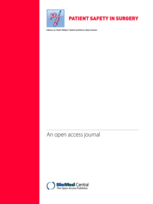
Comparison of sutures and staples for wound closure in orthopaedic surgery

Comparison of sutures and staples for wound closure in orthopaedic surgery
Sutures versus staples for wound closure in orthopaedic surgery: a pilot randomized controlled trial
Patient Saf Surg. 2013 Feb 9;7(1):6Did you know you're eligible to earn 0.5 CME credits for reading this report? Click Here
OE EXCLUSIVE
Dr. Shantz discusses potential differences between sutures and staples for wound closure in orthopaedic surgery.
Synopsis
190 patients undergoing an orthopedic procedure requiring a wound closure greater than 2cm in length, were randomized to determine a superior method of closure between sutures and staples, in terms of minimizing wound complications over 6 weeks. The evidence presented in this study demonstrates that 42% of all patients reported a wound complication with similar rates between suturing and stapling....
To view the full content, login to your account,
or start your 30-day FREE Trial today.
FREE TRIAL
LOGIN
Forgot Password?
Explore some of our unlocked ACE Reports below!

Learn about our AI Driven
High Impact Search Feature
Our AI driven High Impact metric calculates the impact an article will have by considering both the publishing journal and the content of the article itself. Built using the latest advances in natural language processing, OE High Impact predicts an article’s future number of citations better than impact factor alone.
Continue



 LOGIN
LOGIN

Join the Conversation
Please Login or Join to leave comments.